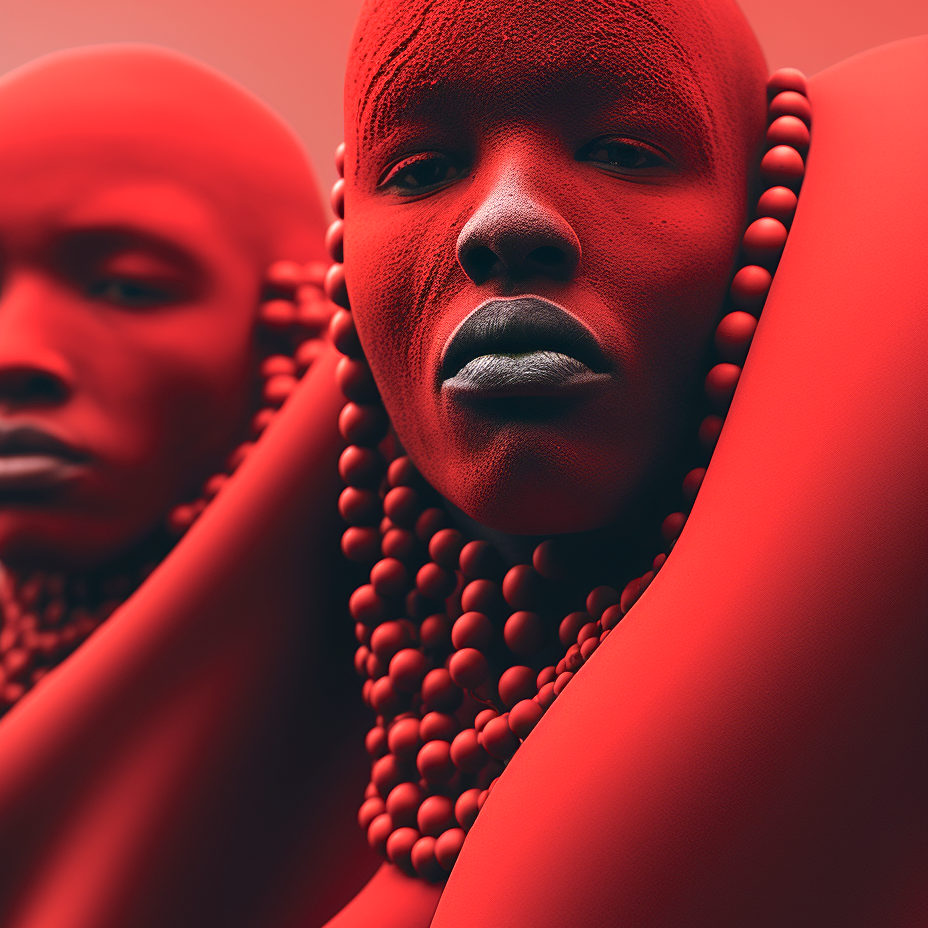The Maasai people have long stood as symbols of courage and cultural resilience. Their distinct identity, deeply intertwined with the color red, resonates through time, embodying bravery, unity, and the sacred bond of community. This post explores a unique modern interpretation of the Maasai warriors, enveloped in smooth, curved red objects, an artistic representation that marries traditional symbolism with contemporary expression.
In traditional Maasai rituals, red ochre mixed with cow fat was used to paint the body and face. This practice was more than an aesthetic choice; it was a profound expression of identity and values. The red color, reminiscent of blood, symbolized the very essence of life, kinship, and vitality. It was a declaration of belonging and a vivid representation of the life force that binds the community.
The face paints, traditionally used in ceremonies and rituals, are reimagined here as symbols of a technologically advanced society, perhaps even as a form of bio-luminescent or digital expression. This integration of futuristic elements with traditional face painting techniques creates a powerful visual metaphor for the fusion of past, present, and future – a core tenet of Afrofuturism. It suggests a world where cultural practices are not left behind but are instead evolved to meet the needs and aesthetics of a futuristic society.
The portrayal of the Maasai warriors in these images, whether in solitary contemplation or in groups, tells a story of continuity and change. The close-up portraits, with their detailed depiction of face paints and expressions, allow us to connect intimately with these warriors, seeing in their eyes a reflection of a culture that is both ancient and progressively futuristic. The group images, with multiple figures clad in red and adorned with futuristic face paints, speak to the collective strength of the Maasai community, suggesting a unified front facing the future without losing sight of their ancestral roots.
The portrayal of the Maasai warriors, with their faces and bodies adorned in this reimagined red paint, creates a striking visual narrative. These images, whether they capture a lone warrior in contemplative solitude or a group in unified strength, speak to the enduring spirit of the Maasai community. The red paint, glowing and dynamic, becomes a symbol of the vitality and resilience that characterizes the Maasai people, a vibrant thread weaving through the fabric of their cultural identity.
In this Afrofuturistic vision, the red body paints of the Maasai are not relics of a bygone era but are instead vibrant symbols of a living culture, dynamically adapting to the changing tides of time. They represent a culture that respects and honors its traditions while boldly embracing the possibilities of the future. The Maasai warriors, with their futuristic red adornments, stand as guardians of the past and pioneers of the future, embodying the essence of Afrofuturism.
